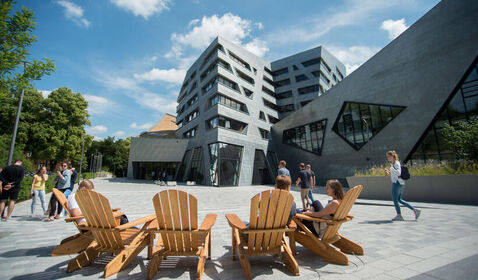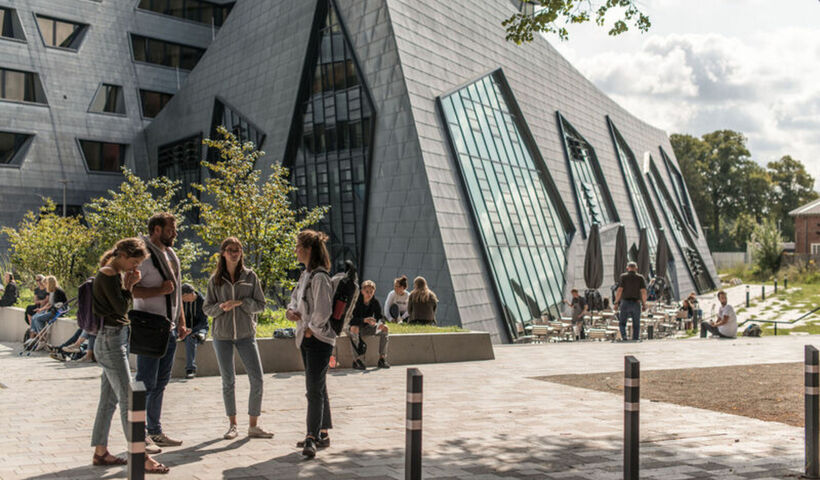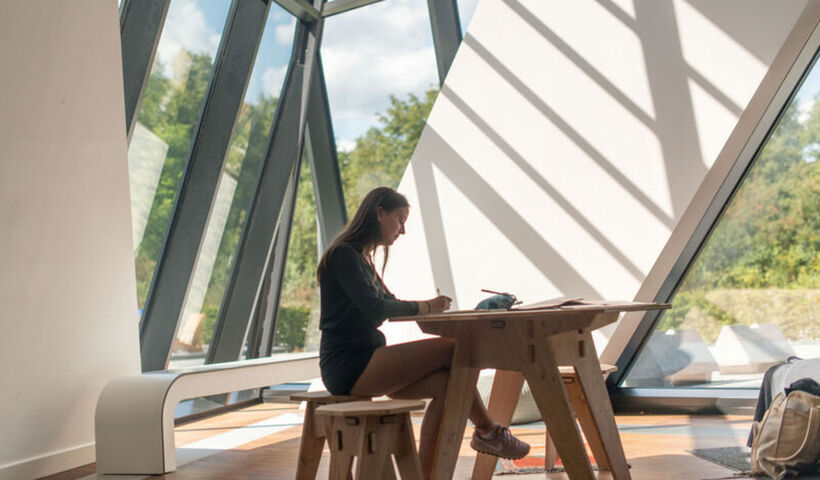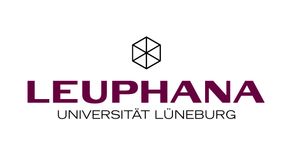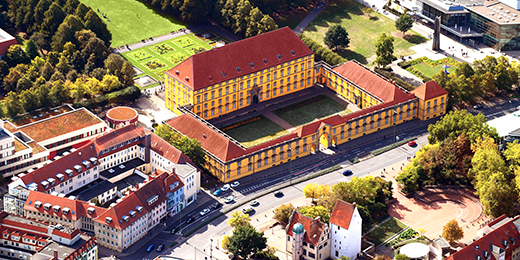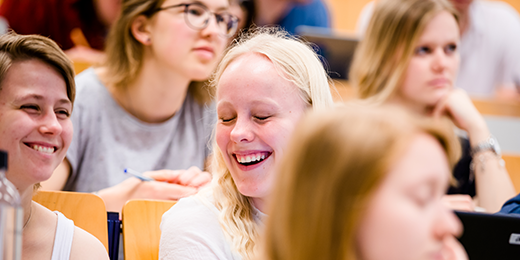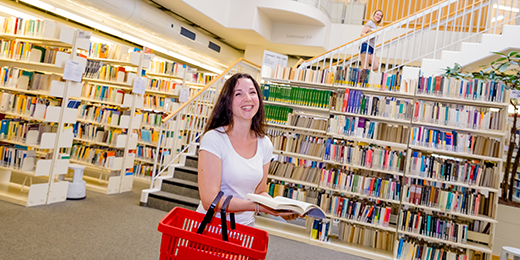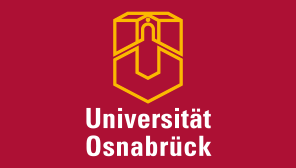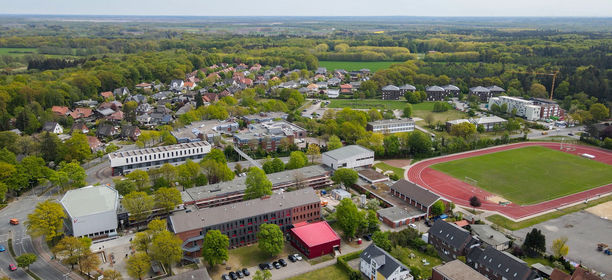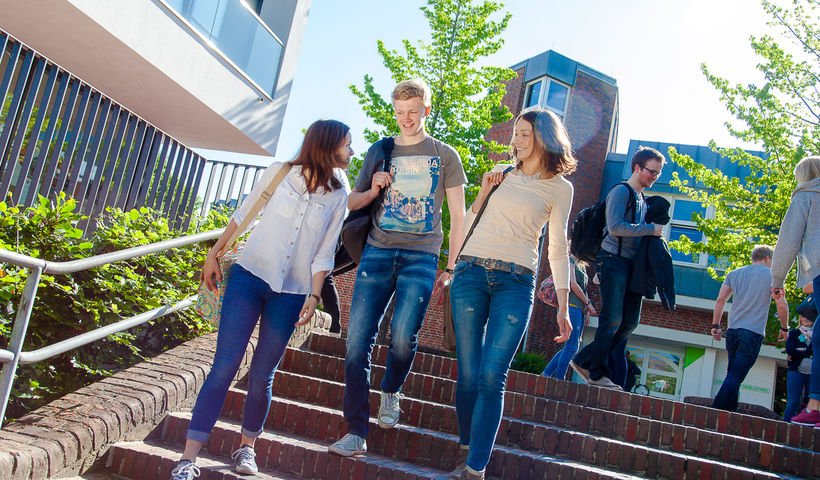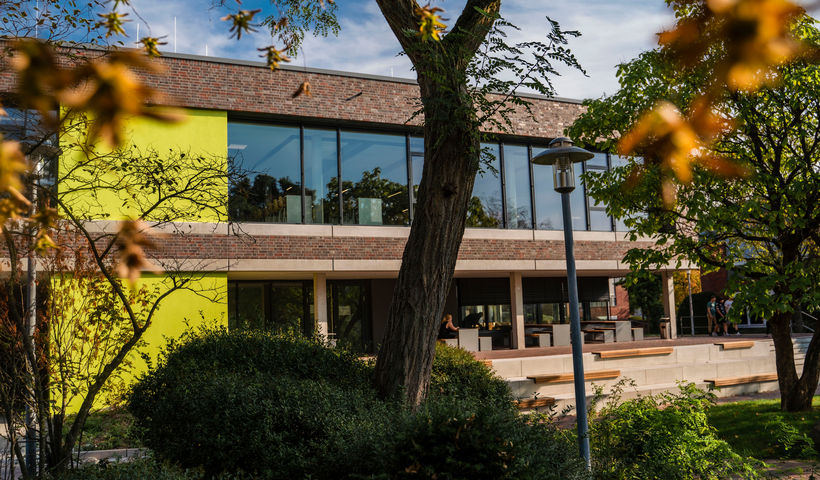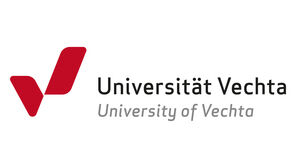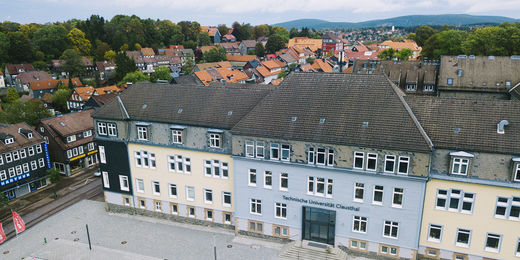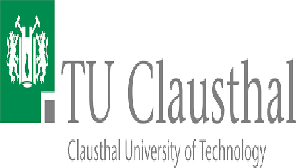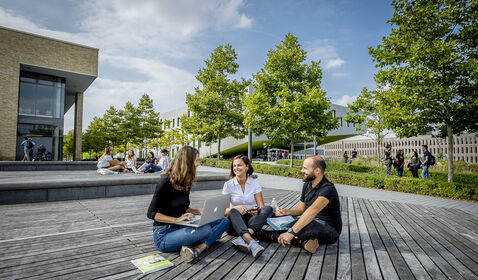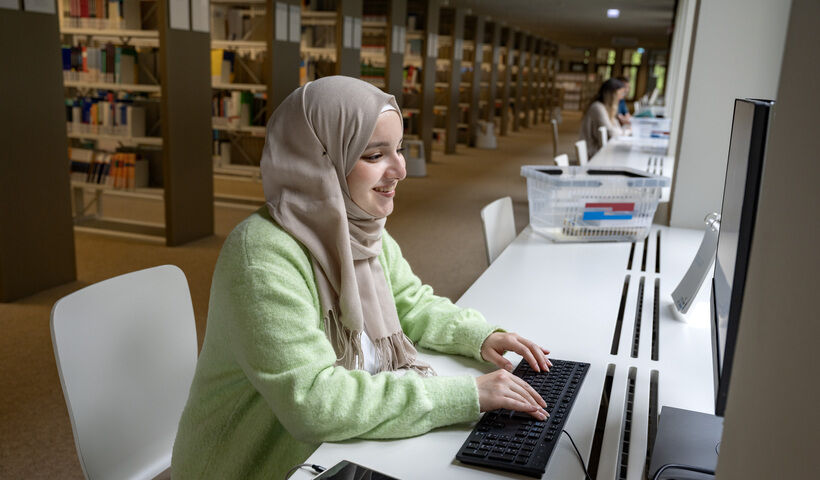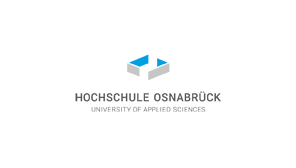Carl von Ossietzky Universität Oldenburg
- Promotionsrecht: Ja
- Trägerschaft: öffentlich-rechtlich
- 1973 gegründet
- 15.335 Studierende
Ammerländer Heerstraße 114-118
26129 Oldenburg
Tel: 0441 798-0
Fax: 0441 798-3000
Hochschule im CHE-Ranking abschneiden.
Die Carl von Ossietzky Universität Oldenburg gehört zu den Universitäten.
Ja, du kannst an der Carl von Ossietzky Universität Oldenburg promovieren.
Die Carl von Ossietzky Universität Oldenburg ist eine öffentlich-rechtliche Hochschule. Es gibt staatliche und staatlich anerkannte Hochschulen, die meist in Universitäten, Fachhochschulen (international: University of Applied Sciences) und Kunst- sowie Musikhochschulen unterteilt werden. Der überwiegende Teil der Hochschulen wird vom Staat finanziert und befindet sich daher in staatlicher Trägerschaft. Dort fallen in der Regel nur geringe Semesterbeiträge an. An den privaten Hochschulen hingegen, die sich über private Trägerschaften finanzieren, können wesentlich höhere Studiengebühren anfallen. Einen Weg, die finanziellen Hürden dieser Hochschulen zu umgehen, können Stipendien darstellen.
Es gibt außerdem Hochschulen, die von der protestantischen oder katholischen Kirche betrieben werden.
Die Carl von Ossietzky Universität Oldenburg wurde im Jahr 1973 gegründet.
Insgesamt gibt es 15335 Studierende an der Carl von Ossietzky Universität Oldenburg.
Standort dieser Hochschule ist Oldenburg.
Hier findest du die Fristen und Termine für deine Bewerbung:
- Vorlesungszeit:
-
14.10.2024 - 31.01.2025
- Studienanfänger:
-
16.07.2024 - 15.10.2024
- Hochschulwechsler:
-
16.07.2024 - 15.10.2024
- International Studierende aus der Europäischen Union:
-
15.05.2024 - 15.10.2024Bewerbung über uni-assist!
- International Studierende aus Staaten, die nicht Mitglied der EU sind:
-
15.05.2024 - 15.10.2024Bewerbung über uni-assist!
- Studienanfänger:
-
15.05.2024 - 15.07.2024
- Hochschulwechsler:
-
15.05.2024 - 15.07.2024
- International Studierende aus der Europäischen Union:
-
15.05.2024 - 15.07.2024Bewerbung über uni-assist!
- International Studierende aus Staaten, die nicht Mitglied der EU sind:
-
15.05.2024 - 15.07.2024Bewerbung über uni-assist!
- Studienanfänger:
-
01.06.2024 - 30.09.2024
- Hochschulwechsler:
-
01.06.2024 - 30.09.2024
- International Studierende aus der Europäischen Union:
-
15.03.2024 - 30.09.2024Bewerbung über uni-assist!
- International Studierende aus Staaten, die nicht Mitglied der EU sind:
-
15.03.2024 - 30.09.2024Bewerbung über uni-assist!
- Studienanfänger:
-
01.06.2024 - 15.07.2024
- Hochschulwechsler:
-
01.06.2024 - 15.07.2024
- International Studierende aus der Europäischen Union:
-
15.03.2024 - 15.07.2024Bewerbung über uni-assist!
- International Studierende aus Staaten, die nicht Mitglied der EU sind:
-
15.03.2024 - 15.07.2024Bewerbung über uni-assist!
- Vorlesungszeit:
-
02.04.2024 - 05.07.2024
- Hochschulwechsler:
-
Die Frist ist abgelaufen
- International Studierende aus der Europäischen Union:
-
Die Frist ist abgelaufen
- International Studierende aus Staaten, die nicht Mitglied der EU sind:
-
Die Frist ist abgelaufen
- Hochschulwechsler:
-
Die Frist ist abgelaufen
- International Studierende aus der Europäischen Union:
-
Die Frist ist abgelaufen
- International Studierende aus Staaten, die nicht Mitglied der EU sind:
-
Die Frist ist abgelaufen
- Studienanfänger:
-
Die Frist ist abgelaufen
- Hochschulwechsler:
-
Die Frist ist abgelaufen
- International Studierende aus der Europäischen Union:
-
Die Frist ist abgelaufen
- International Studierende aus Staaten, die nicht Mitglied der EU sind:
-
Die Frist ist abgelaufen
- Hochschulwechsler:
-
Die Frist ist abgelaufen
- International Studierende aus der Europäischen Union:
-
Die Frist ist abgelaufen
- International Studierende aus Staaten, die nicht Mitglied der EU sind:
-
Die Frist ist abgelaufen
- Vorlesungszeit:
-
14.10.2024 - 31.01.2025
- Studienanfänger:
-
16.07.2024 - 15.10.2024
- Hochschulwechsler:
-
16.07.2024 - 15.10.2024
- International Studierende aus der Europäischen Union:
-
15.05.2024 - 15.10.2024Bewerbung über uni-assist!
- International Studierende aus Staaten, die nicht Mitglied der EU sind:
-
15.05.2024 - 15.10.2024Bewerbung über uni-assist!
- Studienanfänger:
-
15.05.2024 - 15.07.2024
- Hochschulwechsler:
-
15.05.2024 - 15.07.2024
- International Studierende aus der Europäischen Union:
-
15.05.2024 - 15.07.2024Bewerbung über uni-assist!
- International Studierende aus Staaten, die nicht Mitglied der EU sind:
-
15.05.2024 - 15.07.2024Bewerbung über uni-assist!
- Studienanfänger:
-
01.06.2024 - 30.09.2024
- Hochschulwechsler:
-
01.06.2024 - 30.09.2024
- International Studierende aus der Europäischen Union:
-
15.03.2024 - 30.09.2024Bewerbung über uni-assist!
- International Studierende aus Staaten, die nicht Mitglied der EU sind:
-
15.03.2024 - 30.09.2024Bewerbung über uni-assist!
- Studienanfänger:
-
01.06.2024 - 15.07.2024
- Hochschulwechsler:
-
01.06.2024 - 15.07.2024
- International Studierende aus der Europäischen Union:
-
15.03.2024 - 15.07.2024Bewerbung über uni-assist!
- International Studierende aus Staaten, die nicht Mitglied der EU sind:
-
15.03.2024 - 15.07.2024Bewerbung über uni-assist!
- Vorlesungszeit:
-
02.04.2024 - 05.07.2024
- Hochschulwechsler:
-
Die Frist ist abgelaufen
- International Studierende aus der Europäischen Union:
-
Die Frist ist abgelaufen
- International Studierende aus Staaten, die nicht Mitglied der EU sind:
-
Die Frist ist abgelaufen
- Hochschulwechsler:
-
Die Frist ist abgelaufen
- International Studierende aus der Europäischen Union:
-
Die Frist ist abgelaufen
- International Studierende aus Staaten, die nicht Mitglied der EU sind:
-
Die Frist ist abgelaufen
- Studienanfänger:
-
Die Frist ist abgelaufen
- Hochschulwechsler:
-
Die Frist ist abgelaufen
- International Studierende aus der Europäischen Union:
-
Die Frist ist abgelaufen
- International Studierende aus Staaten, die nicht Mitglied der EU sind:
-
Die Frist ist abgelaufen
- Hochschulwechsler:
-
Die Frist ist abgelaufen
- International Studierende aus der Europäischen Union:
-
Die Frist ist abgelaufen
- International Studierende aus Staaten, die nicht Mitglied der EU sind:
-
Die Frist ist abgelaufen


